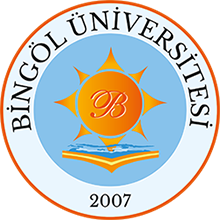BETON NUMUNELERDE ALAŞIM TOZLARININ VE BOR KARBÜR KATKISININ İYONLAŞTIRICI RADYASYON ZIRHLAMA VE MEKANİK ÖZELLİKLERİNE ETKİSİ
Özet
ÖZET
Bu doktora çalışması ile, iyonlaştırıcı gama radyasyonu zayıflatmada kullanılmak üzere alaşımlarla güçlendirilmiş betonun, radyasyonu azaltma kabiliyetinin tespit edilmesi ve bu amaçla nükleer teknoloji uygulamalarında kullanılabilecek yeni bir beton türünün önerilmesi amaçlanmıştır. Alaşım olarak farklı oranlarda bronz, pirinç ve paslanmaz çelik veya bor karbür kullanılmıştır. Numunelerin radyasyon azaltma kabiliyetlerini tespit edebilmek için 22Na, 60Co, 133Ba, 137Cs ve 241Am olmak üzere 5 farklı gama radyoizotop kaynağı kullanılmıştır. Radyoizotop kaynakları kullanılarak 11 farklı enerji değerinde gama radyasyonuna maruz bırakılan beton numunelerin deneysel, teorik ve simülasyon programlarından elde edilen veriler analiz edilmiş, bu veriler karşılaştırılmıştır. Teorik sonuçlar için WinXCOM bilgisayar programı, simülasyon sonuçları için GEANT4 ve FLUKA kodu kullanılmıştır.
Teorik sonuçlara göre gama radyasyona karşı en iyi sonucu veren beton numunelere farklı oranda bor karbür ilavesi yapılarak yine aynı 11 farklı enerji değerinde gama radyasyonu azaltma performansı belirlenmiştir. Yapılan çalışmalarda 7 farklı parametreye göre analizler yapılmıştır. Bu parametreler kütle azaltma katsayısı, lineer azaltma katsayısı, onda_bir kalınlık değeri, yarı kalınlık değeri, ortalama serbest yol, etkin atom numarası ve radyasyon koruma verimi parametreleridir. Bunun yanında tasarımı yapılan beton numunelerin mekanik özelliği olarak basınç dayanımı, ultra ses hızı ve yüzey sertliği incelenmiştir. Gama radyasyona karşı en iyi sonucu veren beton serisine farklı oranlarda bor karbür ilavesi yapılarak 7 farklı enerji değerinde ve 9 farklı kalınlıkta nötron radyasyonuna karşı davranışları GEANT4 ve FLUKA simülasyon kodları aracılığı ile belirlenmiştir. Bu kodlar kullanılarak zırh malzemesinden geçen nötron sayısı simüle edilmiştir.
Yapılan hesaplamalarda gama radyasyonu zırhlamada kullanılan beton numunelerin yoğunluğu artıkça iletilen radyasyonun azaldığı, simülasyonla elde edilen verilere göre, nötron radyasyonu zırhlamada ise kullanılan malzemenin yoğunluğu azaldıkça iletilen nötron sayısının azaldığı görülmüştür. Bu çalışmada kullanılan beton numunelerin radyasyonu azaltma değerleri incelendiğinde tasarımı yapılan betonun nükleer teknoloji uygulamalarında kullanılabileceği düşünülmektedir. ABSTRACT
In this study, it is aimed to determine the radiation attenuation ability of alloy reinforced concrete to be used to attenuate ionized gamma radiation and to propose a new type of concrete that can be used in nuclear technology applications for this purpose. Different proportions of bronze, brass and stainless steel were used as alloys. Of the designed concrete samples, 5x5x5 cm3 cube shaped ones were prepared for mechanical tests, and cylindrical samples with a diameter of 2 cm and a height of 1 cm were prepared for radiation tests. In order to determine the radiation attenuation capabilities of the samples, 5 different gamma radioisotope sources, 22Na, 60Co, 133Ba, 137Cs and 241Am, were used. The data obtained from experimental, theoretical and simulation programs of concrete samples exposed to gamma radiation at 11 different energy values using radioisotope sources were analyzed and these data were compared. WiNXCOM computer program was used for theoretical results, GEANT4 and FLUKA were used for simulation results.
According to the theoretical results, the gamma radiation scavenging at the same 11 different energy values was analyzed by adding different amounts of boron carbide to the concrete samples that gave the best results against gamma radiation. In both cases, analyzes were made according to 7 different parameters. These parameters are mass attenuation coefficient, linear attenuation coefficient, one_tenth thickness value, half value thickness, mean free path and effective atomic number and radiation shielding efficiency parameters. In addition, compressive strength, ultra sound velocity and surface hardness were investigated as mechanical properties of concrete samples. By adding boron carbide at different rates to the concrete series, which gives the best results against gamma radiation, its behavior against neutron radiation at 7 different energy values and 9 different thicknesses was investigated by means of GEANT4 and FLUKA simulation codes. Using these codes, the number of neutrons passing through the attenaution material was simulated.
All the results were analyzed and graphics were obtained with the help of Origin 2018(demo) graphics program. In this case, it has been seen that the use of elements with low atomic numbers is beneficial in terms of attenuating neutron radiation. When the radiation attenuation values of the concrete samples used in this study are examined, it is thought that the designed concrete can be used in nuclear technology applications.
Koleksiyonlar
- Fizik [21]

DSpace@BİNGÖL by Bingöl University Institutional Repository is licensed under a Creative Commons Attribution-NonCommercial-NoDerivs 4.0 Unported License..













